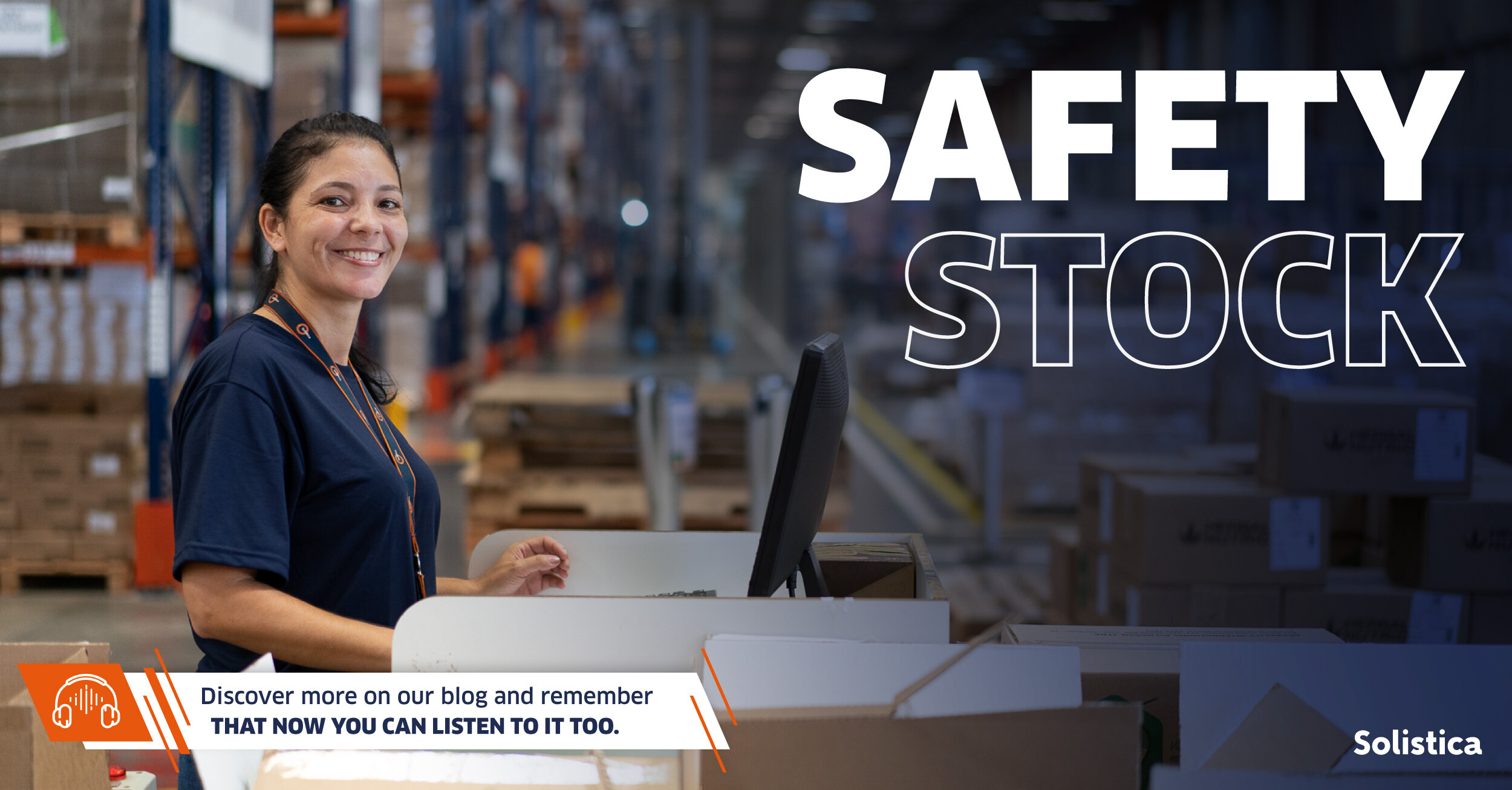In the ecosystem of global logistics and precise inventory management, where adaptability makes the difference between success and failure, predictability is key to success. However, what happens when demand fluctuates unexpectedly or suppliers are late? This is where safety stock becomes your best ally to keep your operations running smoothly and your customers satisfied.
What is safety stock and why is it important?
Safety stock is like a buffer for your inventory. It is an additional amount of products that you keep in reserve to deal with unforeseen events. Safety Stock is the number of units in inventory used to mitigate demand deviation (Blog - Slimstock).
This concept is necessary in supply chain management, as it allows you to:
- Respond quickly to unexpected increases in demand
- Protect yourself against delays in supplier deliveries
- Maintain a high level of customer service
- Avoid losses due to unfulfilled sales
How Safety Stock Improves Your Shipping Planning
In the logistics environment, your business is like a cargo ship navigating the ocean of commerce. Safety stock serves as your stabilizer system and fuel reserves:
In practical terms, maintaining an adequate safety stock allows you to:
- Meet delivery schedules: Maintaining safety stock ensures that companies can keep operations running smoothly, even when unexpected issues arise. (Blog - ACROOS LOGISTICS). Here’s what this means: You can keep your delivery promises, even when unexpected obstacles arise.
- Boost customer satisfaction: By always having products in stock, you avoid frustrating your customers with out-of-stock situations. This not only keeps your current customers happy but can also attract new ones who are impressed by your reliability.
- Optimize operational costs: While maintaining safety stock involves some investment, it's typically less costly than the economic impact of lost sales or emergency restocking operations.
Safety Stock Calculation: The Science Behind Safety
Determining the right amount of safety stock is not a matter of guessing. There is a scientific formula to calculate it:
Safety Stock = Z x σ x √T
Where: Z = Safety factor based on the desired service level σ = Standard deviation of demand T = Lead time.
For example, if you desire a 95% service level, your Z factor would be 1.64. If the standard deviation of your demand is 50 units and your lead time is 2 weeks, your safety stock would be:
1.64 x 50 x √2 ≈ 116 units.
This calculation provides you with a solid basis for your inventory planning, allowing you to balance product availability with storage costs.
Factors that influence your safety stock
Your safety stock is not a static figure. It must be constantly adjusted based on several factors:
- Demand variability: The more unpredictable the demand for your products, the higher the safety stock you need.
- Supplier reliability: If your suppliers are known for late or incomplete deliveries, you will need a higher safety stock.
- Lead time: Products with long lead times require more safety stock than those that you can replenish quickly.
- Desired service level: The higher the level of service you want to offer your customers, the more safety stock you will need.
Benefits of efficient safety stock management
Proper management of your safety stock can bring numerous benefits to your business:
- Operational continuity: Without sufficient stock to sell, you not only lose sales, but also customers (Blog - Cegid Ekon). Safety stock allows you to keep your operations running even in unforeseen situations.
- Improved customer relations: Constant product availability increases customer confidence and satisfaction.
- Cost optimization: Although keeping additional stock implies certain values, these are usually lower than those associated with lost sales or the need to place emergency orders.
- Greater flexibility: Safety stock gives you the necessary margin to adapt to sudden changes in demand or market conditions.
Your safety net in the world of logistics
Safety stock is your safety net. It provides you with the flexibility and responsiveness needed to successfully navigate market uncertainties, keeping your customers satisfied and your operations running smoothly.
Remember, the key is finding the right balance. Too much safety stock can lead to excessive storage costs, while too little can result in lost sales and dissatisfied customers. With the right calculations and constant review, you can find the sweet spot that maximizes your profits and minimizes your risks.
Want to optimize your inventory management and take your shipment planning to the next level? At Solistica, we are experts in logistics and supply chain management. Our team of professionals can help you implement effective safety stock strategies, optimizing your operations and improving your customer service. Contact us today and find out how we can help you achieve your logistics goals!






